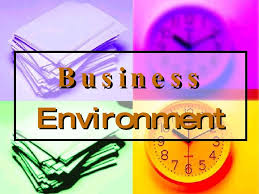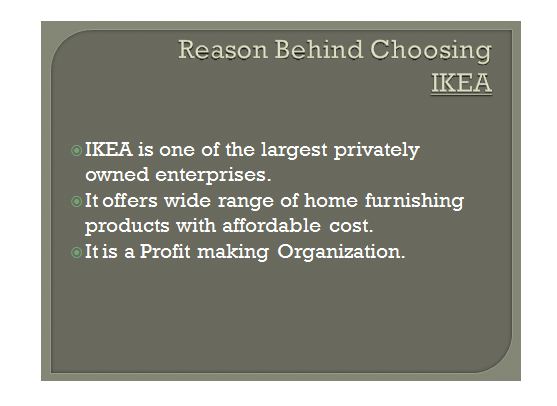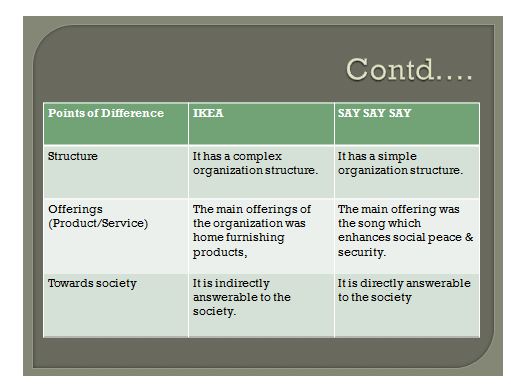- support@locusassignments.com
Unit 1 Business and Business Environment Assignment Copy– IKEA

Introduction
In this business and business environment assignment report, we will be analysing the two different types of organization and their benefits and scope etc. we will also be making differentiation on both the terms and will make deep analysis on these two. Further we will be making analysis on the different aspects of macro environmental factors which affects the working of the business with the help of numerous models such as PESTLE Model, SWOT analysis model and we will also be working on the impact of these factors on the Business relations.IKEA is one of the largest private owned companies. It was founded in Sweden in 1943. It has large number of stores located in mainly every part of the globe. It has established in Japan, Australia, Canada, Hong-Kong, Singapore, France, Spain, Belgium, the United States, the United Kingdom etc. It has main products are ready to assemble furniture, home appliances and home accessories etc. It has also established its working in food-market, family mobile, shopping centre etc. IKEA’s mission is to “create a better life for person” and they put all their efforts for making better life of individuals.
Part 1
P1, P2, M1
A. Power point presentation
P3, M2
B. Short Essay
IKEA is a well known multinational organization. It mainly stress on providing wide range of home appliances & furniture’s that too in affordable prices to make it available for all their current customers and prospective customers. Despite being private owned enterprises, it mainly works on the motive to provide world class quality to its customers and for achieving that it stresses on re-investing its profits in the organization at cheap prices as well as for expanding its business. It is highly customer-oriented organization, all its mission and visions mainly focuses on the masses preferences and requirements (Anderson, et. al., 2011). It also focuses on sustainable growth, and for achieving the same, they re-invest their own resources. The main organization structure of the IKEA follows single authority in which an employee has to report to a single head thereby reducing misconceptions and misunderstanding. It also follows proper channel of communication which excludes any sort of misunderstanding.
Organizations functions-
- The Main function of the IKEA is to sell everything from ready to assemble furniture’s and home furnishing items and other home consumable items
- It has numerous stores working throughout the globe that works and sells all the home furnishing items.
Organization’s objective-
- The main objective of the IKEA is to provide and sell world class ready to assemble furniture’s, home furnishing items and other home appliances.
- It also works for the expansion of the business and for that it majorly re-invest its own resources for the business objectives.
- It is customer-oriented organization which mainly works for the providing world class products with affordable prices in order to make convenient for every class of masses (Anderson, et. al., 2011).
Linking it with the Organization’s objectives and structure
- Organization structure basically defines the hierarchy or the systems of working in the organization. It mainly tells the procedures which are followed in an organization while working across department, organizations etc.
- The channels of communication, authorities, level of management etc are determined through Organizational structure.
- In the IKEA organization there is a complex organization structure which determines its working pattern across departments and across all the departmental stores throughout the globe (Anderson, et. al., 2011).
- With the help of organizational structure, IKEA’s employee’s performance has highly improved due to proper channel of communication and better authority lines.
- The Organization has focused on the delegation of authority which has improved the decision making in the organization as it gives full authority to the employees and timely decisions helps in achieving the objectives easily.
- Due to better organizational structure, IKEA has been able to improve its customer service operations as with the proper organizational structure, company’s internal operational issues do not arise and it completely focuses on the customer dealings.
- IKEA’s follows management chain which helps an Organization in many ways. Organization’s standard procedure to be followed by all the departments across the globe through Management Chain (Carrier, et. al., 2016).
Contact us
Get assignment help from full time dedicated experts of Locus assignments.
Call us: +44 – 7497 786 317
Email: support@locusassignments.com
Part 2
Section 1: PESTLE analysis
Macro environment factors are basically the external factors which directly or indirectly have a bearing/ impact towards the Business organization. Various macro environment factors are Demographics environment, legal environment, Social environment, Political environment, Economic environment etc. These external environment factors are highly uncontrollable and subject to constant change. Therefore constant analyses of these factors are required so that Organization can change itself in accordance with the external factors. Examples of macro environmental factors are change in the interest rate, change in the taste, culture or tradition, change in the technology factor etc (Daunfeldt, et. al., 2015).
An analysis of the external environment of an Organization and behavior is very important. There are numerous models for analysing the external environment of an Organization. One of them is PESTLE Model whose extension is namely P stands for Political, E stands for Economic, S stands for Socio- cultural, T stands for Technological, L stands for Legal and lastly E stands for Environmental.
These all are the major external factors which affects the working of an Organization. Any changes in the external factors directly or indirectly, small or big have some sort of impact over the business normal working. A business has to make certain changes in accordance with the external factors in order to survive for the long term (Daunfeldt, et. al., 2015).
Socio- Cultural Environment- Social Environment refers to an environment which defines the culture and traditions of an society where an organization works. It is highly different and varies from one country to another. An organization which works globally has to make certain changes in its working pattern according to the location. Cultural differences make it difficult to sell a common product as it is throughout the globe, an organization has to make certain changes in it.
Economic Environment- Various Economic factors constitute the economic Environment. Few examples are unemployment pattern, population, interest rate, forign exchange fluctuations, growth rate, monetary and other economic policies etc. these factors have direct bearing or impact over the earning of the organization. Therefore these measures must be carefully analysed (Helmefalk, et. al., 2016).
Technological environment- In the 21st century, it is quite evident that now or than Technological advancement will keep on occurring. Every organization has to keep a check over these technological advancement and need to modify it own working pattern as according to the Technological advancement.
Legal environment- Legal environment tells, about all the acts and statues which are prevalent in a nation. This environment largely affects organization as the laws and order of a nation decides the restrictions over an organization. Any act of an organization which is beyond the legal environment of an nation will make the work void and illegal. Therefore all the organization has to keep a pace with this environment and accord itself with the changes in this environment as and when arises (Helmefalk, et. al., 2016).
Political Environment - Political environment includes in it all the political guidelines and reforms which a leading political party takes. Any organization which strives for long term growth and long term survival has to keep pace with the political parties and with all the reforms which it takes. Since any act beyond the approval of political parties will be considered as illegal.
Environmental Environment- With the extreme developments and advance technologies, it is quite evident that Environment has been quietly harmed. As we all know that resources either natural or human made all are limited. Therefore proper usages of these resources are very much important (Helmefalk, et. al., 2016).
- IKEA has majorly utilised the economic relaxations provided by the governmental institutions and agencies.
- IKEA has always followed the various environmental policies and reforms and has made best use of these policies and reforms in their working and always provided best of quality in accordance with the environment norms.
- With the advancement of technology, IKEA was able to improve the quality of its products/ services. And thereby accomplishing its main objective of providing world class services to its customers (Jonsson, et. al., 2013).
- Due to relaxed and easy international norms the organization managed to open up its stores and business throughout the world. Therefore with the Political agreements
Section 2: SWOT Analysis-
SWOT is basically a framework to make an analysis of the internal as well as external strengths and weaknesses of the organization. SWOT analysis refers to the model which helps in analysing the various factors which affects in the accomplishment of Organization’s objectives and strategies.
SWOT extension refers to S stands for strength, W stands for Weaknesses, O stands for opportunities and T stands for Threats. Where Strength and Weaknesses are part of internal business environment, opportunities and Threats relates to external business environment (Karakosta, et. al., 2016).
S (strength)- Strength basically means to analysis one’s own advantage over the other. These are those features which makes an organization ahead of others. These should always be consider in order to achieve one’s own objectives. Instances of these are technological advancement, goodwill, brand value etc.
W ( Weaknesses )- Every organization has some sort of Weaknesses. These are basically those areas in which an organization lacks due to various reasons. Weaknesses somewhere tell about those areas where an organization lacks behind in comparison to its other competitors. These must be carefully analysed in order to provide a scope for improvement and for gaining competitive advantage. Examples of these are lack of proper orientation, lack of proper communication channels etc (Karakosta, et. al., 2016).
(Opportunities)- Opportunities are those set of things which are or may be available in the business environment. While working in a business environment a constant eye has to be kept open in order to grab the Opportunities as and when they come. With the constant changing pattern in the environment there always remains certain scope for the availability of new opportunities and for the growth. Therefore nearly all the organizations of every industry constantly review the market for knowing and grabbing and making full utilization of the Opportunities as and when they come
T (Threats) - Threats are the disadvantageous conditions of the business environment. These are basically those situations which pose challenges and harmful situations for an organization. Certain examples of threats are- increase in interest rate of loans & borrowings, change in manufacturing pattern etc (Lindegaard, et. al., 2016).
Section 3: Impact of the Strength and Weaknesses on the macro environment factors-
- Political Factor- If an organization has strong political connections than obviously it will benefit the organization in many ways. A strong political connection always benefits the organization by influencing the political policies and guidelines. Such an organization can firmly mould the political guidelines and influence them according to one’s own need.
- One of the strength i.e. Goodwill and fame helps the organization to influence or cope up with the changes in the macro environmental factors. As an organization with renowned fame always wins the society trust and confidence no matter what external environment changes are taking place (Schirone, 2012).
- An Economic stabilize Organization always be in a better position despite the economic fluctuations in the environment. Therefore organization which has abundance of retained earnings and numerous savings always sustain despite the economic fluctuations.
- Employee are the huge assets of an organization and its major strength as well, thereby any organization puts great impact over the macro environment factors because of its human resource and this helps the organization to keep in pace with the various macro environmental factors (Schirone, 2012).
- One of the weaknesses of an organization is lack of proper orientation of employees and in case of any change in the pattern of the external factors of a business environment, creates a chaos in the organization’s working and thus leads to downfall of an organization therefore every organization must work to improve their weaknesses (Svenungsson, 2012).
B. Reflective Summary
Looking at the various micro and macro environmental factors it clearly evident that these factors pose great impact on the working of the Business Organizations. Factors which are internally associated such as one’s own objectives, organization structure, strengths and weaknesses tell about the working pattern of an Organization. And impact of external factors such as political, economic, social, cultural etc tells about the sustainability, growth and longetivity of an Organization. Internal factors manage the internal operations of the organizations and manage the organization’s structure and lines of communication etc. External factors tell the long- term survival and overall growth of the Organization. Overall an Organization success is completely dependent upon the handling of the internal and external factors of the Organization. An organization which makes the best possible utilization of the environmental factors is the leading ones in the Business world and increases their goodwill/ image multiple times as compare to others (Svenungsson, 2012).
With this report we have made a deep analysis with the PESTLE model which is a model used for the external analysis of a Business Organization. PESTLE basically consist of Political, Economic, Socio- cultural, Technological, Legal, Environmental. With the complete study of all these factors it is quite evident that an organization is highly dependent on the changes of these factors as these factors somewhere put a deep impact over the Organization’s objectives and working. An organization cannot survive without living in a environment and that these environment are subject to constant changes and that affects the working in an organization (Svenungsson, 2012).
With the SWOT Model analysis, it has been evident that the studies of various internal and external factors are very important for an Organization’s success and growth. In the SWOT model we have analysed that Strength and weaknesses are the two most important internal factors of an organization. This two internal factors tells about the organization competitive position in the market and also about the survival of the organization. With the Opportunities and Threats, an organization makes an external analysis of the organization and understands the upcoming or existing opportunities and threats of an organization (Svenungsson, 2012).
With the complete analysis of the strength and weaknesses of an organization we have further tried to establish a link of these factors on the macro environmental factors. And studied that these factors put a great impact on the organization macro factors (Svenungsson, 2012).
Conclusion
With the entire report it can be concluded that study of Business Environment is crucial for the establishment and growth of a Business. And that working of a business is affected by numerous external as well as internal factors. These factors on one hand poses challenges to the organization as well as sometimes are very much useful and helpful for the growth of an organizational and ultimately for the development of an entire nation. Internal environment comprises of internal factors such as employees, cultural pattern, corporate culture, organization structure etc. These are mainly defined by the internal management itself and are devised in such a way that they prove to be useful for the Organization’s success. External Factors are the one who are controlled by the external parties of the business such as customers, government’s agencies, other institutions etc. these put in direct impact over the industries. Thus we can say a detailed study of all the factors whether be internal or external are extremely necessary for the growth of an organization.
Reference
Anderson, J.A., Preto, N., sSampson, H., Pullman, D. & McDonald, M. 2011, "Research ethics in 2020: strengths, weaknesses, opportunities, and threats", Health Law Review, vol. 19, no. 3, pp. 36.
Carrier, M.J., Ngodock, H.E., Smith, S.R., Souopgui, I. & Bartels, B. 2016, "Examining the Potential Impact of SWOT Observations in an Ocean Analysis-Forecasting System a", Monthly Weather Review, vol. 144, no. 10, pp. 3767-3782.
Daunfeldt, S., Mihaescu, O., Helena, N., Rudholm, N., Nationalekonomi, Akademin Industri och samhälle, Högskolan Dalarna & Kulturgeografi 2015, "What happens when IKEA comes to town?", Regional studies,
Helmefalk, M., Institutionen för marknadsföring (MF), Linnéuniversitetet & Ekonomihögskolan (FEH) 2016, "Congruency as a mediator in an IKEA retail setting: Products, services and store image in relation to sensory cues", International Journal of Retail & Distribution Management, vol. 44, no. 9, pp. 956-972.
Jonsson, P., Rudberg, M., Holmberg, S., Linköpings universitet, Tekniska högskolan, Institutionen för teknik och naturvetenskap & Kommunikations- och transportsystem 2013, "Centralised supply chain planning at IKEA", Supply Chain Management: An International Journal, vol. 18, no. 3, pp. 337-350.
Karakosta, C., Papapostolou, A., Dede, P., Marinakis, V. & Psarras, J. 2016, "Investigating EU-Turkey renewable cooperation opportunities: a SWOT analysis", International Journal of Energy Sector Management, vol. 10, no. 3, pp. 337-362.
Need Help with Your Assignment?
Get expert guidance from top professionals & submit your work with confidence.
Fast • Reliable • Expert Support
Upload NowDetails
Other Assignments
Related Solution
Other Solution














